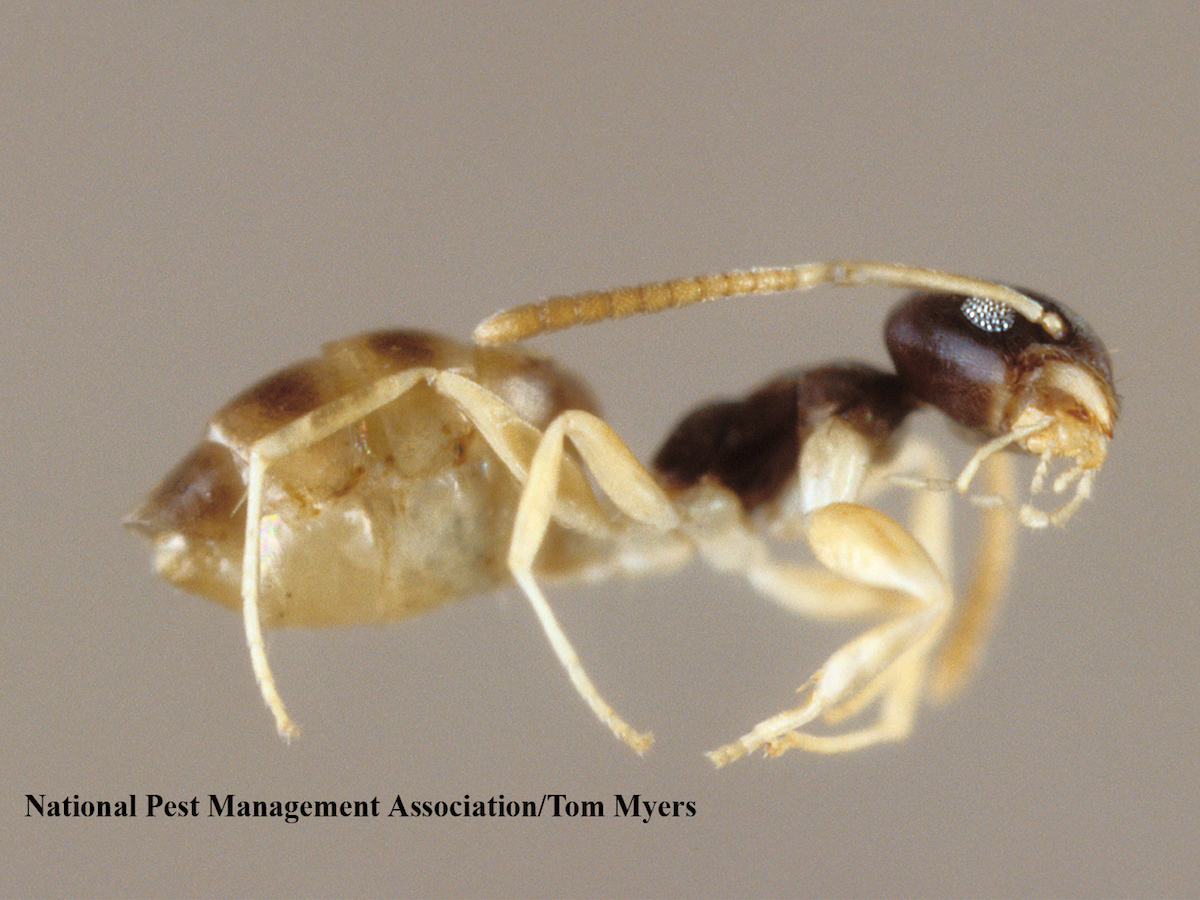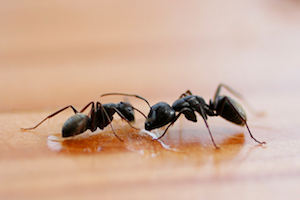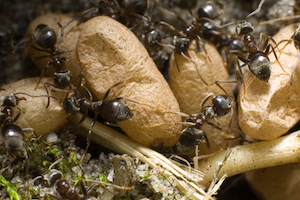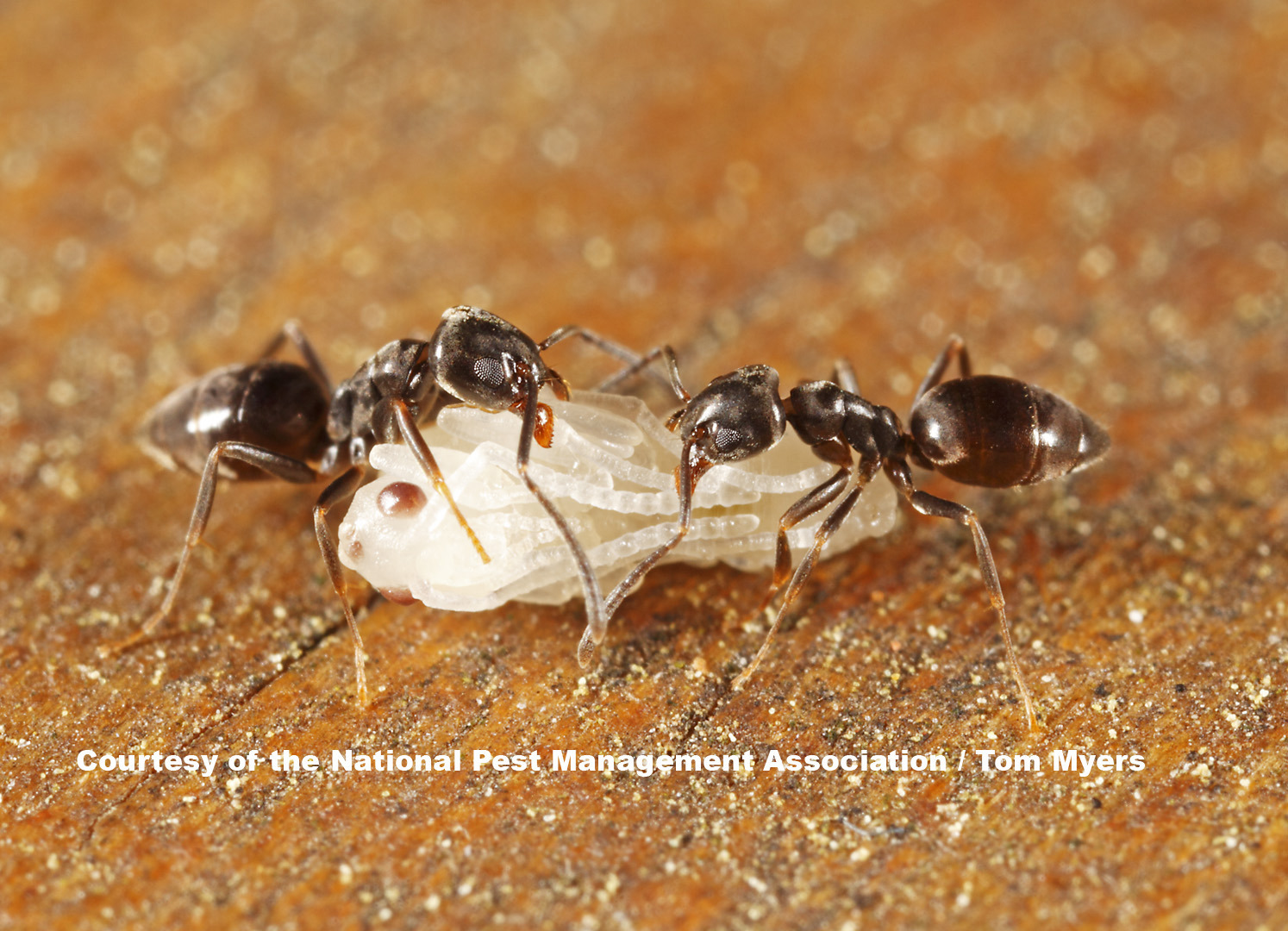Ghost Ants Tapinoma melanocephalum (Fabricus)

Color: Head and thorax dark brown; abdomen and legs pale yellowish in color
Size: Workers about 1/16” (1.3-1.5 mm) long
Legs: Six
Antennae: Yes
Shape: Unevenly rounded; thorax lacks spines
Region: Found in many areas of the United States, Puerto Rico, Canada and the Caribbean Islands
What are ghost ants?
Ghost ants get their common name from the fact that they are very hard to see due to their pale color and tiny size. They are a tropical species, probably of African or Asian origin. In the United States, ghost ants are found primarily in central and southern Florida and Hawaii. This type of ant is unable to survive in the northern states except in greenhouses and heated spaces.
Ghost ants often enter homes by trailing along branches of trees and shrubs in direct contact with the structure. To prevent a ghost ant infestation, homeowners should keep shrubbery trimmed, ensure branches are cut back, leaf litter and debris is removed, and store firewood at least 20 feet away from the home.
A thorough inspection of the home is crucial to determine if a ghost ant infestation has developed. Indoors, homeowners should occasionally inspect sinks, toilets, and tubs for any leaks or drips. Check carpet edges and shoe moldings, and around windows and doors for trails of ants. Also, inspect electrical outlets and telephone jacks, especially in the kitchen and bathroom. Outdoors, pay attention to the area along foundation walls and sidewalks by pulling back the grass. Turn over any stones, bricks, logs, firewood or debris on the ground.
Controlling ghost ants requires time and patience. Homeowners should consider working with a licensed pest professional to employ a preventative pest management plan or treat an existing problem.
Ghost ants are highly adaptable in their nesting habits, which seem to be similar to those of pharaoh ants. Colonies of ghost ants are moderate to large in size and can contain thousands of workers and numerous functional queens distributed across multiple nesting sites.
Ghost ants are very fond of honeydew. They also feed on dead and living insects. Inside, ghost ants show a preference to sweet foods and are most commonly found in kitchens.
Outside, ghost ants make their nest in the ground. They prefer cavities and crevices in dead tree branches, but will also nest under stones, inside logs and within piles of leaves and other debris. Ghost ants will readily enter structures by trailing from nests along sidewalks, patios and foundation walls.
Inside, ghost ants typically nest in wall voids, behind baseboards, between cabinets and inside the soil of potted plants. Workers often trail under carpet edges and along electrical wires in wall voids where they are hidden from view. Because of their high moisture needs, ghost ants can also be found trailing to water sources such as sinks, shower stalls, tubs, potted plants, etc.
Ghost ants do not sting, as they lack a stinger. However, ghost ants can become a serious nuisance because they are known to nest inside homes. Similar to odorous house ants, ghost ants give off a coconut-like odor when they are crushed.
If you suspect a ghost ant infestation in your home, the best course of action is to contact a licensed pest control professional. They will conduct a thorough inspection to identify the full extent of the problem. Once the situation is properly identified, the appropriate control measures can be taken.
You can find a certified pest professional near you with the helpful zip code search below.




